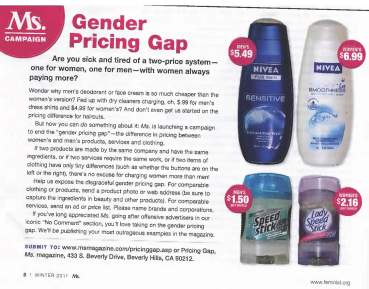Blogroll from Gendered Ads & Global Consumer Culture
- Ali F.’s Blog
- Amelia V.’s Blog
- Borders of Desire: Sex and the Nation State
- Brianna S.’s Blog
- Cierra Olivia’s Personal Blog
- Claire’s Blog
- Courey S.’s Blog
- Eleanor F.’s Blog
- Emma S.’s Blog
- Jessica B.’s Blog
- Jordan F.’s Blog
- Katherine L.’s blog
- Lainey G.’s Blog
- Laura D.’s Blog
- Lauren F.’s Blog
- Lauren W.’s Blog
- Madi M.’s Blog
- Maggie Sullivan’s Blog
- Matt D.’s Blog
- Megan R.’s Blog
- Melissa M.’s Blog
- Micah R.’s Blog
- Nikki B.’s Blog
- Rachel R.’s Blog
- Rebekah W.’s Blog
- Renesha’s Blog
- Samantha L.’s Blog
- Samantha T.’s Blog
- Stephanie G.’s Blog
- Stephanie W.’s Blog
- The Department of Gender Studies at IU
- Tia B.’s Blog
- Troy’s Blog
- Winter K.’s Blog
Below are the topics the IU students above were responding to.
_____________________________________________________________
FINAL BLOG TOPIC:
Compare and contrast corporate personhood in the film The Corporation/Bose and Lyons Critical Corporation Studies/ Klein’s No Logo with Chaudhuri’s “Gender and Advertisements: The Rhetoric of Globalisation.”
- How is personhood understood in the film/Bose/Klein versus in the Chauduri article?
- How specifically does normative gender figure into these constructions of subjectivity?
You do not have to write about the film AND Bose AND Klein, however, you must use at least one of the sources on corporate personhood to address the blog.
Resources you may use (min. of 2 required):
-The Corporation
-Bose and Lyons – “Toward a Critical Corporate Studies,” by Purnima Bose and Laura E. Lyons in (ed.) Purnima Bose and Laura E. Lyons, Cultural Critique and the Global Corporation. Bloomington: Indiana University Press, 2010.
-Klein, Naomi. No Logo, London: HarperCollins
– Chaudhuri, Maitrayee, “Gender and Advertisements: The Rhetoric of Globalisation,” by Maitrayee, Women’s Studies International Forum, Vol. 24, No. ¾ p 373-385, 2001.
Blog Due April 22, 2011 at 5 p.m. in oncourse/assignments and two comments URL due in oncourse/assignments/blog 5/6 by Sunday April 24, 2011 at noon. (Must be 900 words, use at least two critical terms, and must cite at least two readings from the course).
_________________________________________
Blog #4 Topic: Reflect on John Berger’s theory of the gaze (“men act and women appear”) and on Michel de Certeau’s practices of the everyday (“what is counted is what is used, not the ways of using”).
- Your reflection must address how both writers identify and address power relationships within consumerism and consumption.
- John Berger’s theory of the gaze argues that women are absent agency and femininity is immobilized. How might we use de Certeau’s insights in “Making Do” to break apart or problematize notions of inert consumerism and passive femininity?
Bonus points: if you find a way to creatively incorporate videos/images/music as a part of this blog #4. For example, you may find an artifact of popular culture as a catalyst to address this blog assignment.
Due Date: URL to blog Due in oncourse Friday March 25, 2011 by 5 p.m. / Two Comments submitted to oncourse by noon on Sunday March 27, 2011.
Texts you must use in this assignment:
- “General Introduction and ‘Making Do’: Uses and Tactics,” by Michel de Certeau, Berkeley: University of California Press, 1984.
- Berger, John. Chapter 3, Ways of Seeing. Viking Press, New York, 1974
- Thomas-Williams, Critical Terms in Gender Studies, accessed January 27, 2011: http://g205atiu.wordpress.com/critical-terms/
__________________________________________________________________________________________
Blog #3 Topic: How have feminist approached magazines as artifacts of culture? In other words, what methods, critiques, praises, concerns, etc. do feminists have for advertising and magazines? Can advertising and magazines generate emancipatory politics and analytical/political frameworks?
- Blog Post #3 due Thursday February 17, 2011 at 5 p.m.
(you must post URL in Oncourse/Assignments/Blog #3) - Two 250-word comments due Saturday, February 19, 2011 at noon.
(You must post URLs in Oncourse/Assignments/Blog #3)
Requirements: You must answer this in 600-900 words not with opinion, but with a thorough analysis (as in “essay-style” writing). You must also use at least two critical terms in gender studies in your writing (cite and define in text or in footnotes).
Analysis is interpretation bolstered by evidence from the various texts we have read thus far. In other words, the tone of your writing should NOT be conversational. Therefore you will need to reference or cite work in text with the author and page number in parenthesis at the end of your sentence, like this (Berger, 12).
Up to five points of extra credit may be earned by bloggers who find a way to creatively include imagery or other forms of media in this post.
Texts you may use in this assignment:
- Rooks, Noliwe M. Ladies’ Pages: African American Women’s Magazines and the Culture That Made Them. New Jersey: Rutgers University Press, 2004
- Friedan, Betty. “Chapter 2, The Happy Housewife Heroine” 33-68. The Feminine Mystique. New York: W.W. Norton & Company, Inc., 1963.
- Meyewrowitz, Joanne (1993). “Beyond the Feminine Mystique: A Reassessment of Postwar Mass Culture, 1946-1958,” The Journal of American History, VOl. 79, No. 4 (Mar., 1993), pp. 1455-1482.
- Thomas-Williams, Critical Terms in Gender Studies, accessed January 27, 2011: http://g205atiu.wordpress.com/critical-terms/
_____________________________________________________
Blog Assignment #2 / Two Comments
Blog #2 (600-900 words) due Thursday February 3, 2011 at 5 p.m. and Two 250-word comments due Friday, February 4, 2011 at noon.
Blog post assignment #2: In the chapter focusing on the Fidji article, Berger lists seven methodological approaches to understanding or “decoding” advertising and commercials: semiotic, psychoanalytic, historical, political, myth/ritual, and feminist (p. 141, Third ed.).
In 600-900 words minimum, you should:
1. Embed anywhere within your post a particular commercial or advertisement that you wish to analyze.
2. Analyze the commercial or advertisement using one of the methods discussed in Berger. Analysis is interpretation not summary.
3. You are required to engage with Berger’s arguments, ideas, or research and two critical terms in gender studies as well as cite and define them ( in end notes or in-text). See citations below.
Two Comments: Your two comments must be at least 250 words each. Please try to visit numerous blogs, because while not everyone in class talks, everyone in this class does speak. Find our course blogroll here to the right! —->
Here are the citations you are expected to use:
Berger, Arthur Asa. Ads, Fads and Consumer Culture, 2nd or 3rd Edition. Rowman & Littlefield Publishers, Inc., 2003/2007
Thomas-Williams, Critical Terms in Gender Studies, accessed January 27, 2011: http://g205atiu.wordpress.com/critical-terms/
______________________________________________





